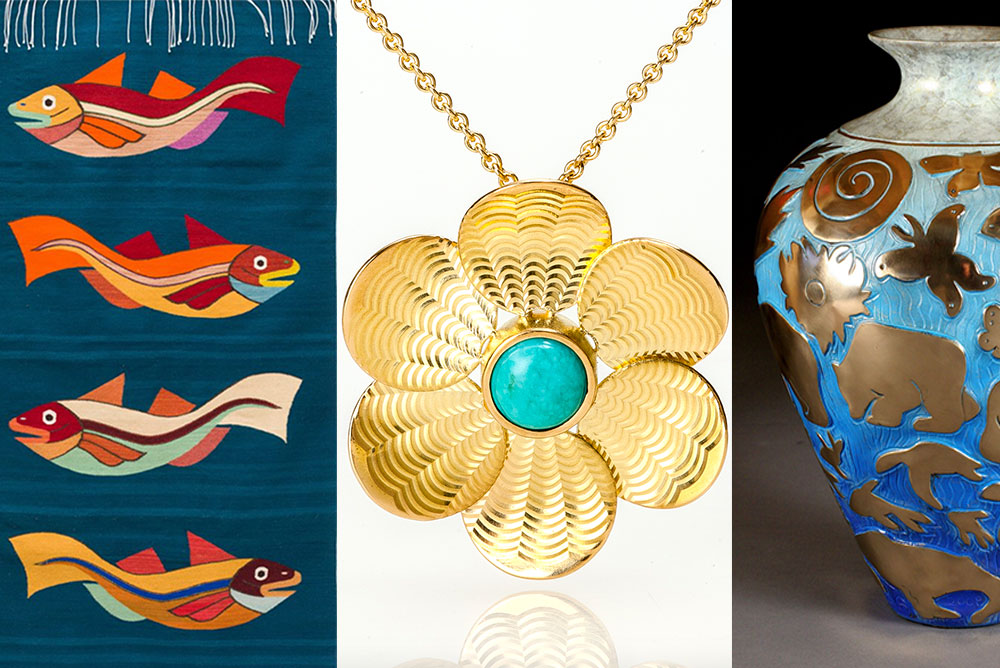
Decorative fiber, jewelry and pottery by Native American artisans, who will be showing and selling their work at the Smithsonian Craft Show May 3-7.
By Janet Kelly
SPRING’S A many splendored thing, and as NPR’s Susan Stamberg has been known to say, “[It’s] what Washington does best.” Adding to the city’s appeal is the Smithsonian Craft Show—it’s the event’s 41st year—which brings the country’s leading contemporary crafts artists to the awe-inspiring National Building Museum. Mark your calendar for May 3–7.
If you haven’t been to the show before, you’re in for a treat. If you’ve been coming for years and are in search of what’s new and different, you’re also in luck. Among the 120 expert-juror selected exhibitors will be 12 (10 of whom are show first-timers) Native American/Indigenous artisans displaying and selling their designs in decorative fiber, jewelry, metal, ceramics, wood and wearable art.
Smithsonian Women’s Committee member and show co-chair Peg Butner (Elaine Cole and Anne Keiser are fellow co-chairs) says one of the inspirations for the theme, “Celebrating the American Spirit,” was that for the first time since it opened in 2004, a woman—Cynthia Chavez Lamar—was named director of the National Museum of the American Indian. Butner thinks the show will be an eye-opener for anyone who thinks Native American craft “only involves turquoise and silver.”
But without further ado, here’s a sneak preview into the work of four artists who celebrate the American spirit.
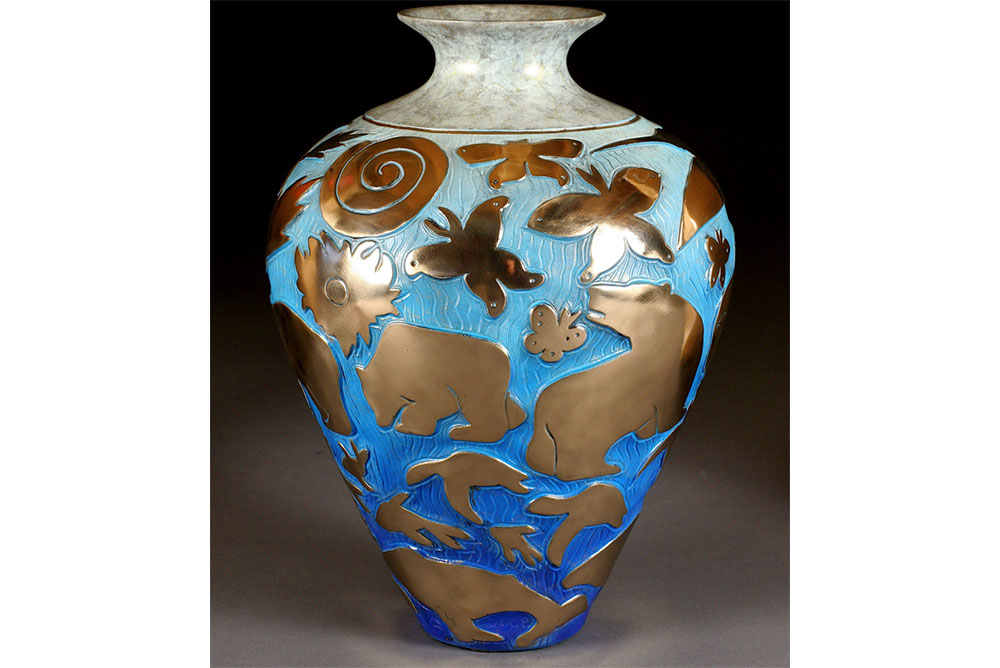
A member of the Kansas Kickapoo Tribe, Pahponee, whose name translates to Snow Woman, likes to mix materials—her favorites are clay for its strength and bronze for its colors. She selects designs from her one-of-a-kind pottery creations that she thinks best translate to be sculpted in bronze.
The vase above, which tells the story of her tribe’s creation, is a striking example. At the bottom of the vase, fish and turtles swim in lapis blue water; in the middle is earth, represented by two-and four-legged inhabitants, and at the top is the sky, where hummingbirds and butterflies fly.
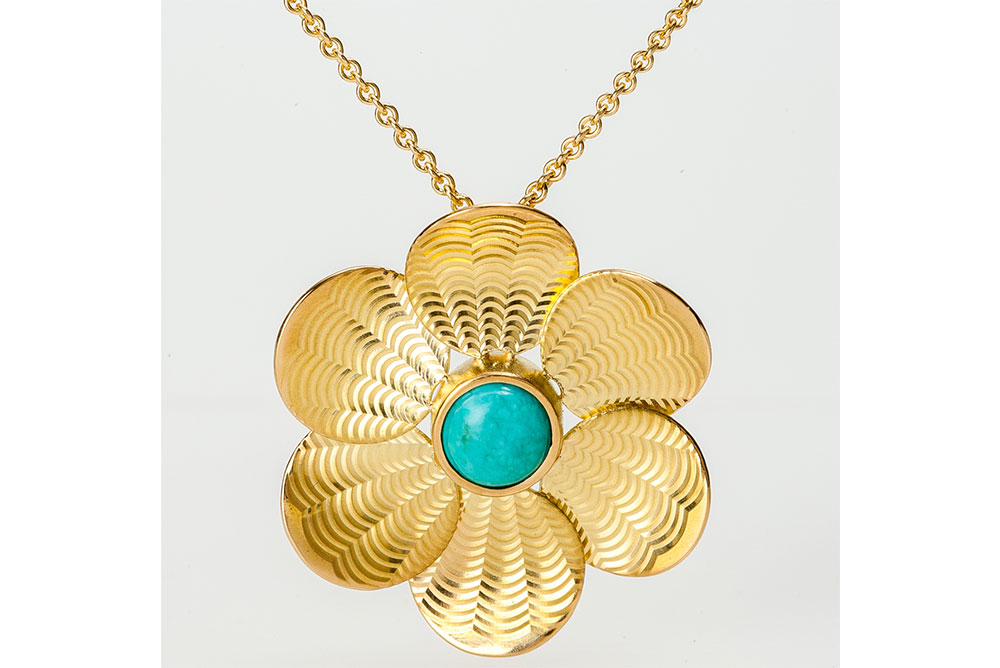
After graduating from college in 1998, Taos, New Mexico born-and-raised Maria Samora took a jewelry-making class for fun. But it was a tough apprenticeship that convinced her designing jewelry was the path she wanted to pursue, plus it equipped her with the technical skills she needed to do so. One of Samora’s signatures is her practice of mixing metals, mainly silver and gold, to achieve a rich, textural piece as well as a durable one. To ensure her jewelry fits right, she wears them first herself. It might be beautiful, but if it doesn’t feel right or lie right, she says, nobody is going to wear it.
The quatrefoil pendant on the gold necklace above is an ancient symbol— a favorite of Samora’s—which she frequently incorporates into her designs.
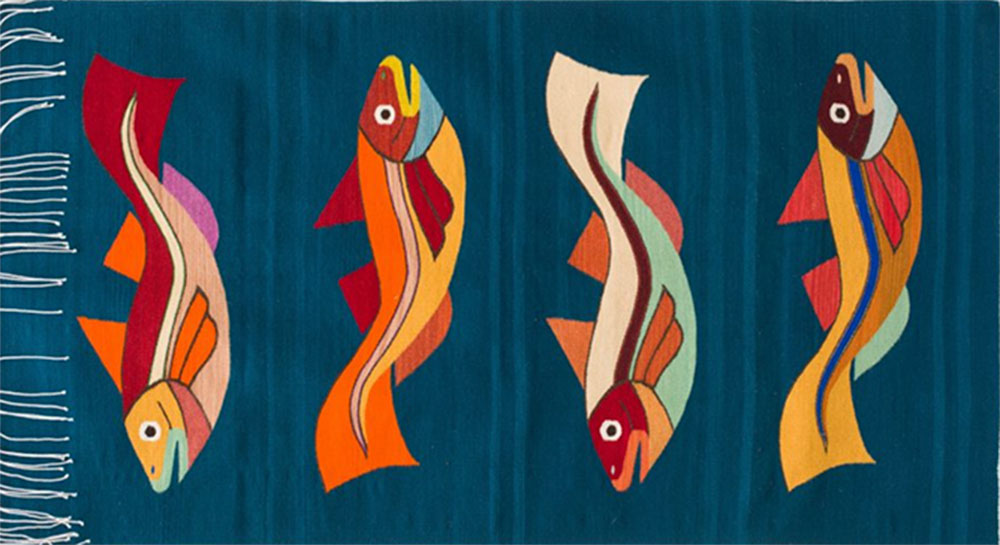
Born in Teotitlán del Valle, a village in Oaxaca, Mexico, Francisco Bautista and his wife, Laura, moved to Sandy, Oregon, in 2003 and set up their studio. Weaving has been in his family for generations. [It] “is like dancing. You move your whole body in harmony with the loom. The colors of yarn play like instruments around you as you weave, and the tapestry that emerges is the song you have made together . . ..” The rich colors of their work come from a variety of natural dyes, including cochineal, indigo, marigold petals, pomegranate, oregano and wild blackberries. Wouldn’t this whimsical, boldly colored piece make a wonderful decorative wall hanging—or area rug or pillow cover? Special orders in hand-dyed colors, designs and sizes can be ordered.
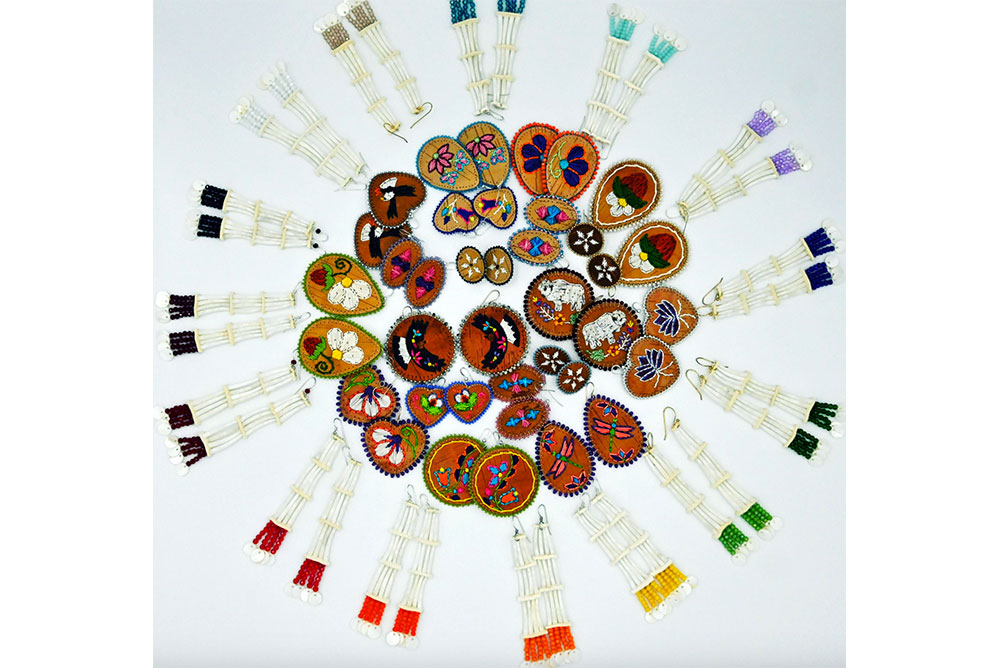
A fifth-generation woodland birch bark and porcupine quill worker, Monica Raphael wants to guarantee the survival of traditional Anishinaabe knowledge and the craft of her grandmothers. When creating her wearable art and jewelry, she says she feels as if she’s having a conversation with her Anishinaabe ancestors, who decorated their clothing and adorned themselves to enhance their beauty and show their wealth.
The long earrings above are made from dentalium (tusk shells that are a kind of seashell), glass-fire polished beads and mother of pearl discs. The round and oval bolo earrings are made from porcupine quills and edged with beadwork.
The Smithsonian Craft Show opens to the public on Thursday, May 4, 2022. Want to be among the first? Tickets for the Preview Night Party—from 6 to 9pm on Wednesday, May 3—are $250. First Look and Visionary Reception—from 5 to 6pm—are $500.
Show hours: 10:30am to 5:30pm, Thursday, May 4 to Saturday, May 6 ; and Sunday, May 7, 11am to 5pm. You may use your ticket on the day of your choice.
Admission: $20 at the door or in advance online at Smithsonian Craft Show. You can find tickets at EventBrite.
Group tickets (10 or more) and students are $15 each.
The Smithsonian Craft Show is produced by the Smithsonian Women’s Committee, an all-volunteer organization that supports the education, outreach and research programs of the Smithsonian Institution. The National Building Museum is located at 401 F Street NW (202-272-2448). The closest Metro stop is Judiciary Square.

Awesome theme, Janet, thanks for highlighting it! When i saw the title I thought I was going to see American flags–what a wonderful surprise!
I will try very hard to go, sounds like a super event!
Beautiful stuff to see!
The Smithsonian Craft Show is not only fabulous and a chance to talk with superb craft artists about their work, it is also the chief source of fundraising that enables the Smithsonian Women’s Committee to select and fund important projects across the museums, research facilities, libraries and programs of the Smithsonian that would otherwise go unfunded. Feel good about going!